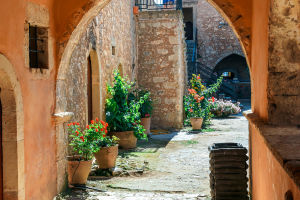We all know that the South African tourism has a secret treasure, the Kruger National Park. With an incredible variety of biospheres within this national park a safari never gets any better.
The world-famous Kruger National Park is South Africa’s largest game reserve and one of the finest wildlife sanctuaries on the planet. The Kruger National Park has nearly two million hectares of unfenced African wilderness, in which more mammal species roam free than in any other game reserve. All of Africa's iconic safari species – elephant, lion, leopard, cheetah, rhino, buffalo, giraffe, hippo and zebra – share the bushveld with a supporting cast of 137 other mammals and over 500 varieties of bird.
An intricate and well-developed network of roads within this pristine wilderness allows travelers the unique opportunity of exploring the 2,2 million hectares either on guided safaris, self-driving or guided trails or 4×4 adventure. Adjoining private game reserves, with luxurious branded lodges add value to the destination by creating a natural buffer and adding valuable land to the Kruger hence the term Greater Kruger. This is unspoilt beauty and the perfect destination for any nature lover.
The Kruger National Park is big! Bigger than Belgium or Wales. It’s approximately 360 kilometres long and has an average width of 65 kilometres at its widest point. It is a true unspoilt hectares of African bush plains. Many visitors from around the world consider the Kruger National Park to be one of the best national parks in the world. It is in fact the third largest National Park worldwide.
The Kruger National Park is perfect for day visitors to take some time and self-drive through and get a real taste of Africa or join a guided open vehicle safari, and it caters for all budgets and tastes when it comes to accommodation with some of the most renowned private concession lodges in the world adding the luxury experiences.
The Kruger National Park is easily accessible, as you can travel via road or fly in to Skukuza by schedule flight from Johannesburg or Cape Town. Charter flights also access the reserve for groups and high-end travelers. It also offers guided bush drives and nature walks from most of the rest camps.
The Kruger National Park is home to five vegetation zones, each with their own special flair and diverse range of species. From arid semi-desert to thickly wooded areas with flowering trees, it’s a mixed bag of remarkable nature at its best. Be on the lookout for the iconic Baobab trees that pepper the region, and the interesting creatures that make them their home.
The dry winter season (May–Oct) is considered the best time to go to Kruger for game viewing. Vegetation is low and sparse, making animals easier to spot and follow, and wildlife will not move far from remaining water sources at this time of year. It’s a very comfortable time for a safari with few mosquitoes around, little if any rain, and pleasant temperatures. The summer’s afternoon thundershowers transform the Kruger into a beautiful, thriving green landscape that makes for superb photography. Game viewing is still good – and with many young summer-born animals around it's a predator's paradise. It's also the best time to visit the Kruger for bird watching plus safari-and-beach holiday combinations.


